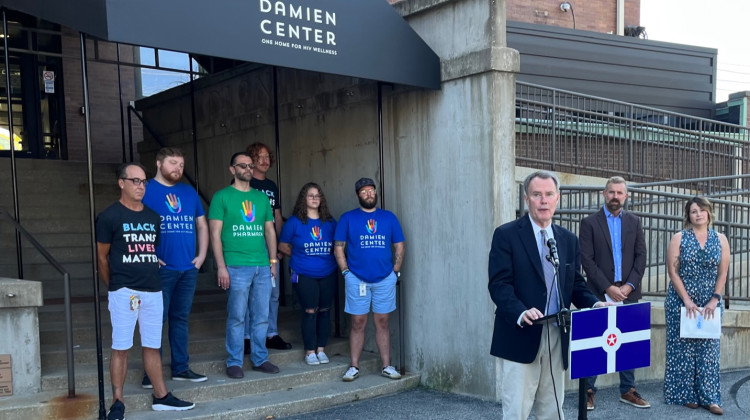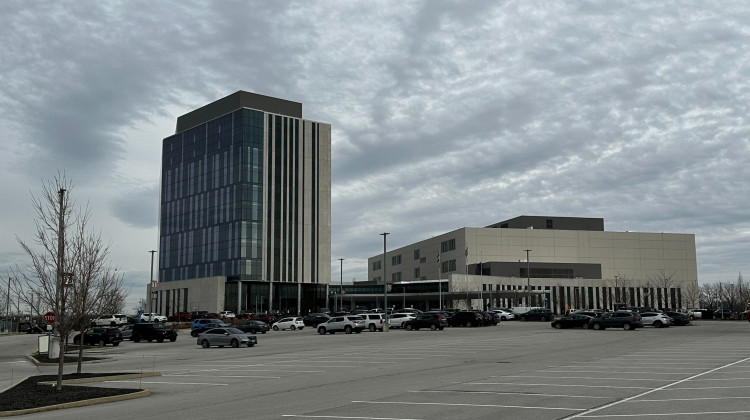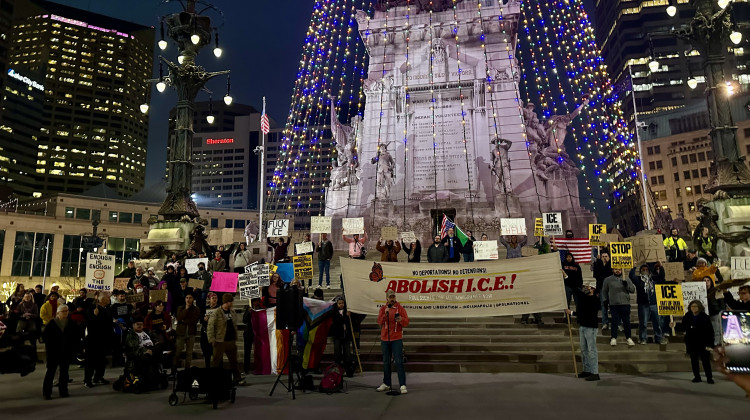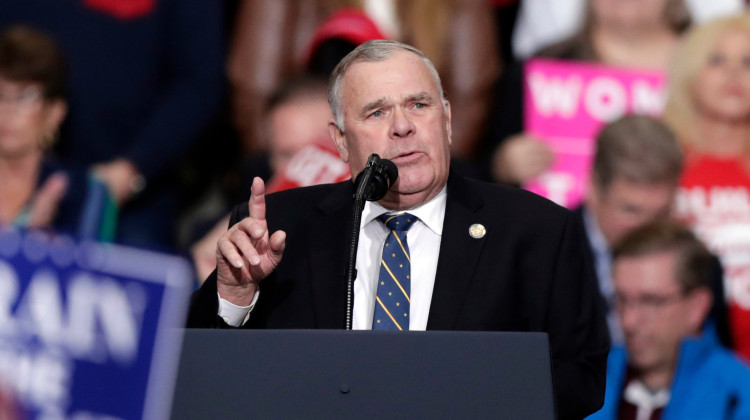The effort to end homelessness in Indianapolis hinges on the accessibility of safe, affordable housing.
In 2018 when the city of Indianapolis laid out plans to end homelessness, it set out a goal that by 2023 no one experiences more than 30 days without a permanent, safe, affordable place to live.
The plan included a comprehensive, collaborative effort between the city and other partners in the Continuum of Care. Led by the Coalition for Homelessness Intervention and Prevention, CHIP, the Indianapolis Community Plan to End Homelessness lays out specific ways to end homelessness.
At the top of the list is adding 1,100 permanent supportive housing units. So far, the city has added 685. CHIP Executive Director Chelsea Haring-Cozzi said the pandemic has impacted efforts and it’s more important than ever to be innovative.
“It’s a tight rental market,” Haring-Cozzi said. “We can’t always do the things we’ve always done so we have to get creative. We’ve got to look at shared housing models. We’ve got to look at how to bring more affordable housing to the market quicker.”
COVID-19 also brought tens of millions in federal relief funding to efforts to address homelessness in Indianapolis. The money has gone to a variety of services and programs, including a low-barrier hotel program. Indianapolis Mayor Joe Hogsett said the funds have been vital.
“The pandemic demonstrated the many ways individuals could become homeless,” Hogsett said.
Local nonprofits have been a key part of recent efforts. At the Damien Center this week, Hogsett highlighted funding that topped $2.8 million that the center received for housing. The Damien Center also participated in a federally funded youth demonstration program that successfully housed 32 young people.
At the same time youth and family homlessness ticked up in Marion County.
The annual Point in Time Count released this summer finds overall homeless numbers are down about 9 percent, but still higher than pre-pandemic counts.
Haring-Cozzi said the key is to invest in programs that are targeted, like the Damien Center’s LGBTQ youth demonstration and then double down.
“How do we scale up? We need to keep investing in the things that work and then really expand them to scale,” she said.
The Damien Center, Indiana’s oldest center serving people with HIV/AIDS, is set up to provide many trauma-informed, inclusive, wrap-around services. Housing Program Manager Sharon Rickson said for clients it is often more than just a place to live.
“It’s hard to say ‘Here’s your keys, welcome to your new home. Now you have to worry about your electric bill. Now you have to worry about furnishing it. Now you have to worry about transportation,’” Rickson said.
The Indianapolis plan to end homelessnes also includes measures to better integrate service coordination through the continuum. The 2023 goal to make homelessness rare, brief and non-recurring may fall short. Haring-Cozzi said a plan evaluation process starts this month.
“Where are we? How have the last two years really changed the landscape and impacted the plan, how do we go back and set some targets for how we want to see progress year over year?” Haring-Cozzi said.
Despite concentrated city efforts to promote housing development, high rent, construction and supply shortages are impactful. The IU Public Policy Institute Center for Research on Inclusion and Social Policy, CRISP, partners with the city to conduct the annual Point in Time Count.
Policy Analyst Brendan Bow wrote a recent report on the count and commented on the city’s plan. He said it’s a good start. “Sticking to that and sort of making increased efforts knowing that we’ve seen increased issues with COVID is something the city should be proud of, as long as they stick to the plan, right?
The Point In Time Count conducted the week of January 24, 2022, the PIT count determined the number of people experiencing homelessness in Indianapolis dropped from 1,928 in 2021 to 1,761 in 2022.
Contact WFYI city government and policy reporter Jill Sheridan at jsheridan@wfyi.org. Follow on Twitter: @JillASheridan.
 DONATE
DONATE







 Support WFYI. We can't do it without you.
Support WFYI. We can't do it without you.